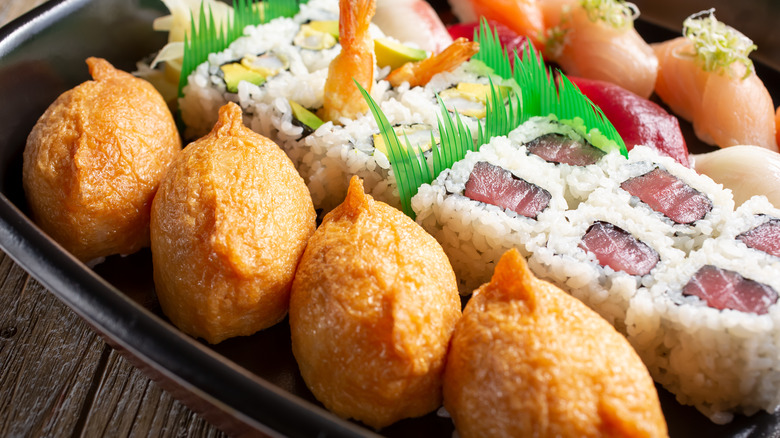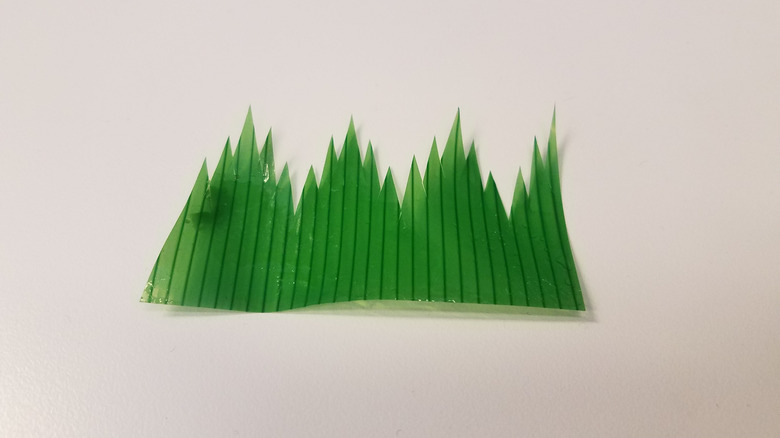Here's Why There's Plastic Grass In Sushi Containers
No matter where you order sushi to-go, whether it be from a grocery store or an actual Japanese restaurant, the packaging pretty much looks the same. It's usually a rectangular container with a clear plastic top, and between the different pieces of sushi are several pieces of plastic grass. This grass, however, serves more of a purpose than decoration, and it's more important than you'd think (via Mental Floss).
The plastic grass acts as a divider that preserves the integrity of each piece of sushi by preventing the flavors and aromas from mixing. So if you order sushi, don't just pick out the plastic grass and toss it, because it ensures that when you bite into a spicy tuna roll, you're just tasting a spicy tuna roll, and not picking up the flavors from the sashimi sitting beside it. The plastic grass also has the same function in bento boxes and is a traditional part of preparation in Japanese cuisine.
The plastic grass in sushi containers wasn't always made of plastic
You may know it as plastic grass, but technically it's called haran, or baran. The name is a combination of "ha" the Japanese word for leaf, and "ran" which translates to orchid. Wondering why they would refer to a piece of plastic as an orchid leaf? According to Japanese Food Guide, it's because it wasn't always made of plastic.
During the Edo period, when bento boxes were first invented, Japanese chefs would separate their food with various plant leaves. This became such a common practice, that the cutting of the leaves turned into an art form called sasagiri (via Saveur). Japanese Food Guide explains that using plant leaves was effective because not only did they keep the flavors separate, they're also naturally antimicrobial and kept food safe from bacteria before refrigeration existed. Over time, however, haran was modernized and is now manufactured out of plastic and cut to look like the pieces of grass you see in your sushi containers.

